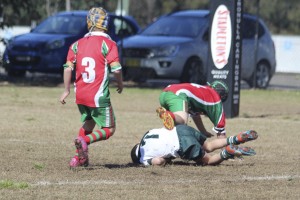
Heel pain is a common complaint among adolescent children. We all want our kids to be active and healthy – but what do you do when keeping them active seems to be causing heel pain? Today we will be exploring a common cause of heel pain in the growing adolescent and child.
Pain in the back of the heel where the Achilles tendon joins the bone.
 Why and how does this happen?
Why and how does this happen?The calf muscle joins the back of the heel onto a growth area through the Achilles tendon. This growth area is softer than mature bone and is susceptible to injury and irritation. Activities that include repetitive calf contraction such as jumping and running may contribute to the onset of this condition.

Keeping kids active through the tween and teen years is great for physical and mental health.
Sever’s usually affects active kids who are involved in sports with explosive movements such as sprinting, jumping, and kicking (hello soccer, footy, netball, basketball, running….you get the picture). One heel is usually affected, but in some cases both heels can be affected.
Strategies for managing heel pain in Sever’s may include:
It is not necessary to ride this one out. Keeping kids active is really important. See one of our Physiotherapist for a speedy recovery and good management.
Research: